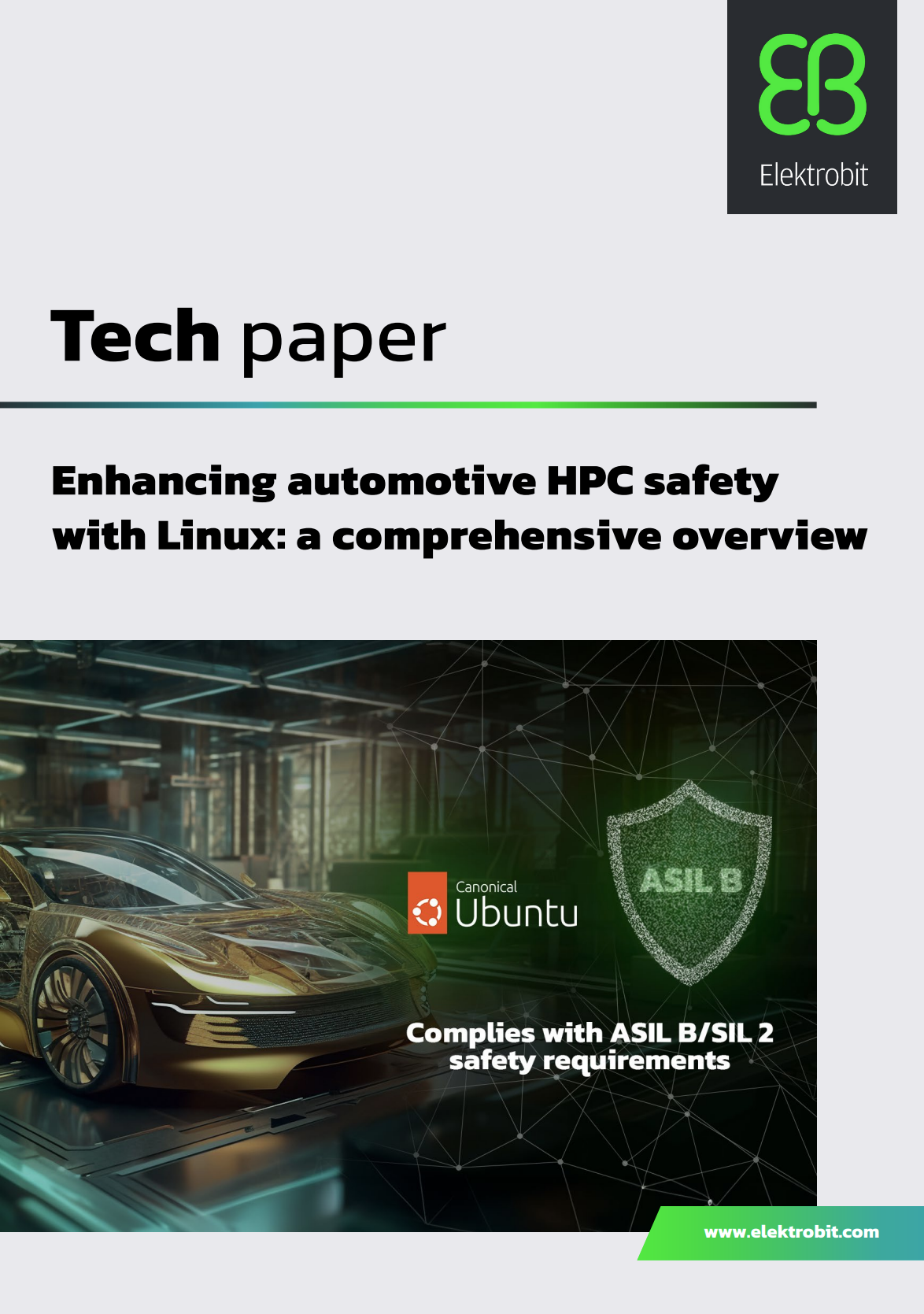
Table of contents
1. Introduction
1.1 Functional safety matters
1.2 Automated driving increases the need for safety-relevant software
1.3 High-performance computing and applicability to AD/ADAS and cockpit
2. The role of Linux in automotive systems
2.1 Understanding and defining the Automotive OS
2.2 Advantages of using Linux in automotive systems
2.3 Advantages of using a specialized Linux distribution in automotive over enterprise
distributions or embedded Linux build system
3. Functional safety standards and regulations in the automotive industry
3.1 Overview of relevant safety standards and regulations
3.2 Impact of functional safety standards on Linux-based automotive systems
4. Safety solution for Linux in automotive
4.1 Functional safety-relevant failure scenarios
4.2 Integration of safety measures into the Linux-based automotive software stack
5. Best practices and recommendations
6. Conclusion
1.1 Functional safety matters
1.2 Automated driving increases the need for safety-relevant software
1.3 High-performance computing and applicability to AD/ADAS and cockpit
2. The role of Linux in automotive systems
2.1 Understanding and defining the Automotive OS
2.2 Advantages of using Linux in automotive systems
2.3 Advantages of using a specialized Linux distribution in automotive over enterprise
distributions or embedded Linux build system
3. Functional safety standards and regulations in the automotive industry
3.1 Overview of relevant safety standards and regulations
3.2 Impact of functional safety standards on Linux-based automotive systems
4. Safety solution for Linux in automotive
4.1 Functional safety-relevant failure scenarios
4.2 Integration of safety measures into the Linux-based automotive software stack
5. Best practices and recommendations
6. Conclusion
Introduction
Since the 1990s, the automotive industry has witnessed a proliferation of electronic control units (ECUs) in vehicles, driven by increasing system complexity. Features such as anti-lock braking systems, traction control, and advanced driver assistance systems (ADAS) demanded dedicated ECUs, allowing for optimization, and ensuring efficient performance and reliability.
This modular approach to ECU design facilitated easier integration of new features without overhauling the entire system, offering flexibility and cost-effectiveness in sourcing, assembly, and maintenance. Moreover, dedicated ECUs for critical functions such as braking and airbag deployment significantly improved vehicle safety and reliability by isolating these functions and reducing the risk of system failures.
Resource type
Tech paper
Related content
Click on the button to load the content from Pardot.


